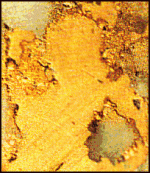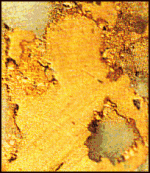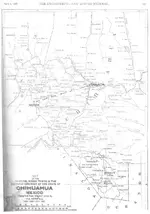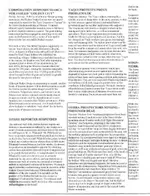Greetings,
Springfield that is a quite different version from the oldest versions; in fact this sounds like q quite different deal altogether, based on Indians bringing in gold to trade and the trader going off to hunt for it - not the placer diggings reported by Adams and his sole surviving partner when they were met by a Cavalry patrol. According to this version, Adams and Davidson were picked up near the Black river in AZ, and showed a huge gold nugget the size of a goose egg to the soldiers and others later, which was clearly a placer gold nugget. The location was supposed to be four days travel from Fort Wingate in NM, (which has actually moved - the current location is not where old Fort Wingate was) but beyond that the directions are fuzzy - in large part because Adams himself was "fuzzy" and never managed to re-locate the zig-zag canyon with the little waterfall. (I have personally searched for this lost mine, and believe it could be located again with enough time and a methodical approach.) A good indicator as to where the mine was located is that Adams himself started most of his searches for the mine from the little town of Silver City NM, traveling NW - though the original route was from the Pima villages on the Salt river, traveling NE for a number of days.
Gold does occur in places where it should not be, however it is very discouraging and frustrating work to prospect for gold in areas that are
not promising, like the Superstitions. A great deal of LUCK is involved, in my opinion. Interesting though that the Indian's ore samples were coming from the malpais mountains to the
south of Fort Wingate.....
How were these working's values explained?
HOLA Tropical Tramp! Breyfogle's ore sample assay result was from a grab sample, probably the richest ore showing on the surface - it is almost certainly the same ore and same mine known today as the Amargosa mine in CA - experts who have examined the ore from the Amargosa and Brefogle have said it is identical - and as we all know, gold ore is a bit like fingerprints, no two ores are alike. Also, Breyfogle himself once visited the Amargosa mine while out searching for his lost ledge, looked things over and left - and quit searching for the lost ledge forever - I think he instantly recognized it had been found and claimed. Who says those lost, legendary mines never get FOUND?

As you have correctly pointed out, with a commercial mine, the ore body also has to take into account the country rock hosting the ore shoots; for a mining company this is very important, for a one or two-man operation it is not quite so important; if the ore is rich enough, a small operation can afford to work out the stringers without taking out a lot of country rock - "drifting" and following the ore. With today's modern metal detectors, it is possible to do this with greater chance of success than the "old timers" who had to trust to instinct and luck when following an ore vein. Many an old-timer miner found a fortune and then sank the fortune back into the ground trying to mine ore that was not worth mining.
Oroblanco








 As you have correctly pointed out, with a commercial mine, the ore body also has to take into account the country rock hosting the ore shoots; for a mining company this is very important, for a one or two-man operation it is not quite so important; if the ore is rich enough, a small operation can afford to work out the stringers without taking out a lot of country rock - "drifting" and following the ore. With today's modern metal detectors, it is possible to do this with greater chance of success than the "old timers" who had to trust to instinct and luck when following an ore vein. Many an old-timer miner found a fortune and then sank the fortune back into the ground trying to mine ore that was not worth mining.
As you have correctly pointed out, with a commercial mine, the ore body also has to take into account the country rock hosting the ore shoots; for a mining company this is very important, for a one or two-man operation it is not quite so important; if the ore is rich enough, a small operation can afford to work out the stringers without taking out a lot of country rock - "drifting" and following the ore. With today's modern metal detectors, it is possible to do this with greater chance of success than the "old timers" who had to trust to instinct and luck when following an ore vein. Many an old-timer miner found a fortune and then sank the fortune back into the ground trying to mine ore that was not worth mining.
